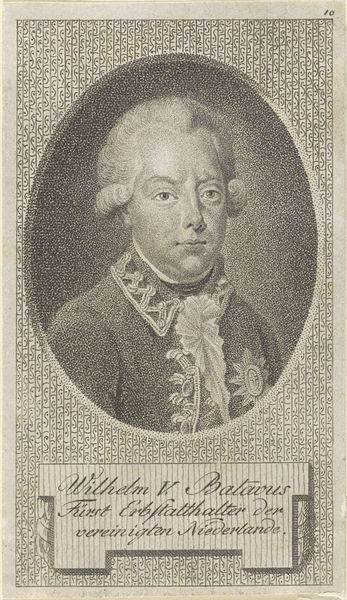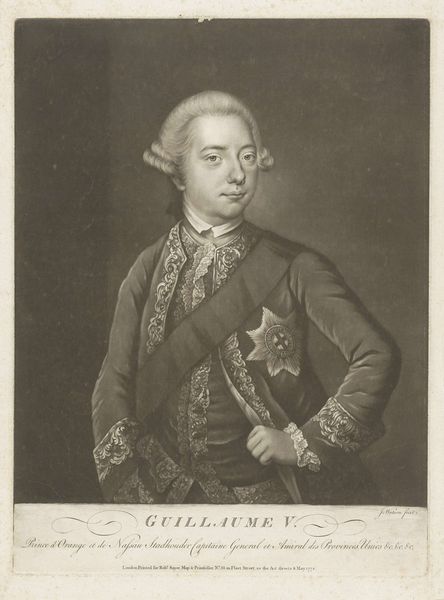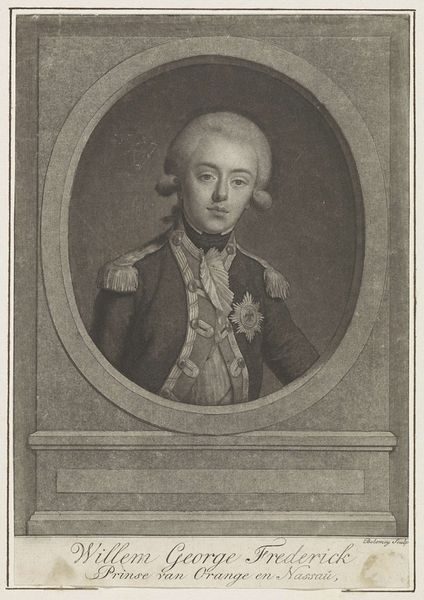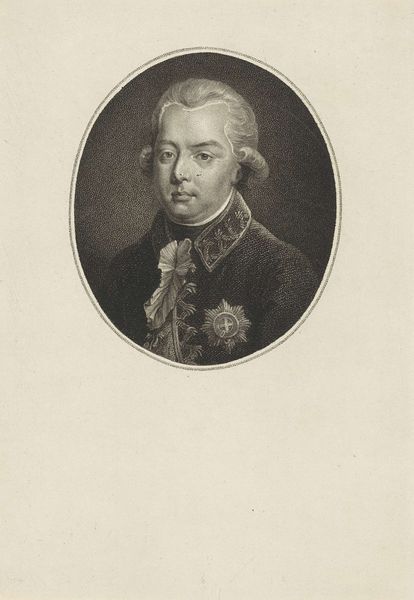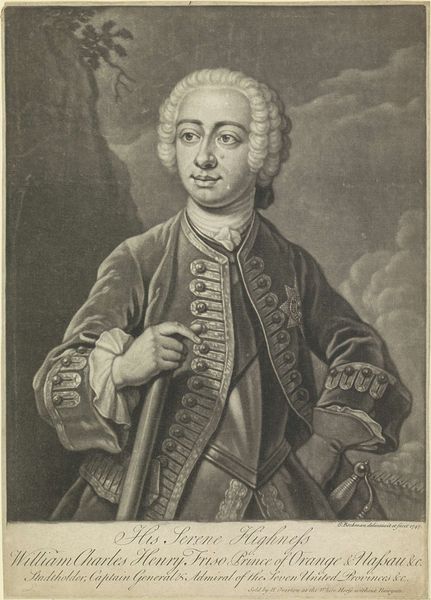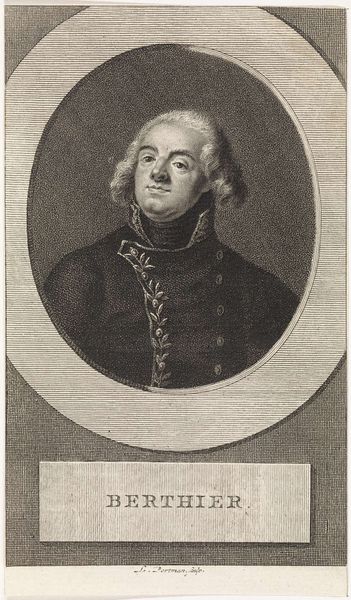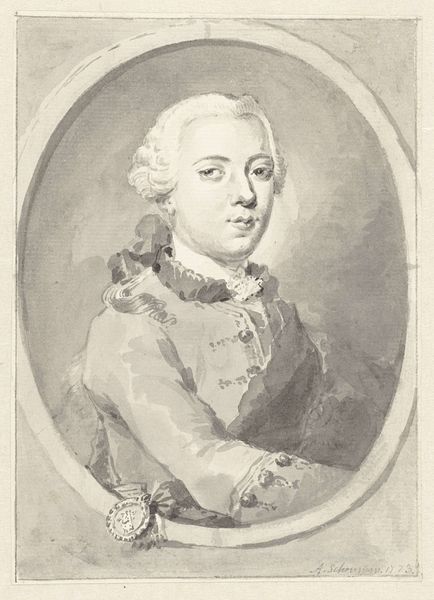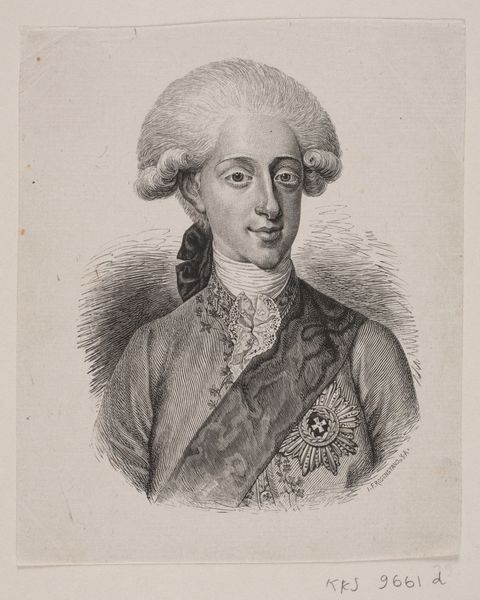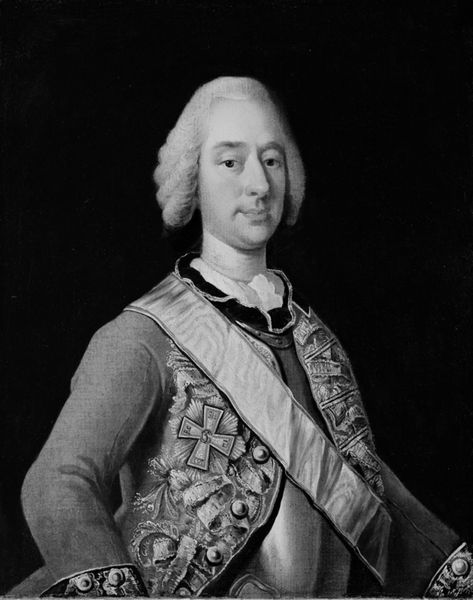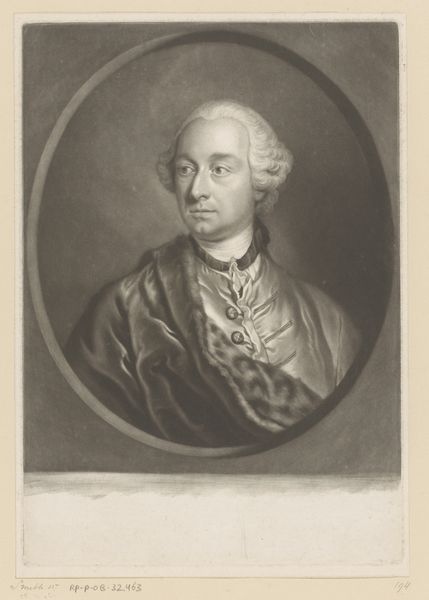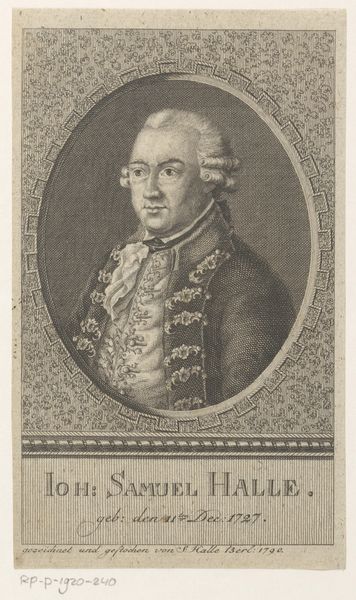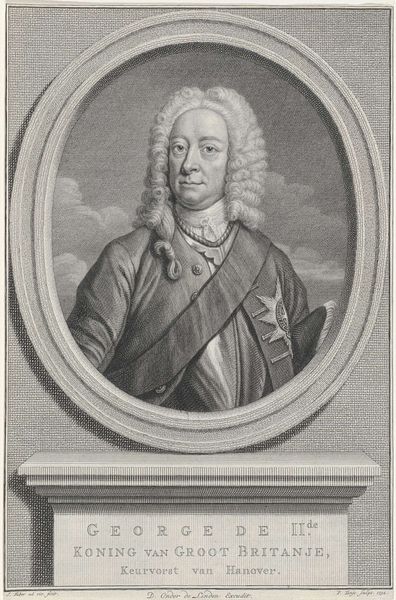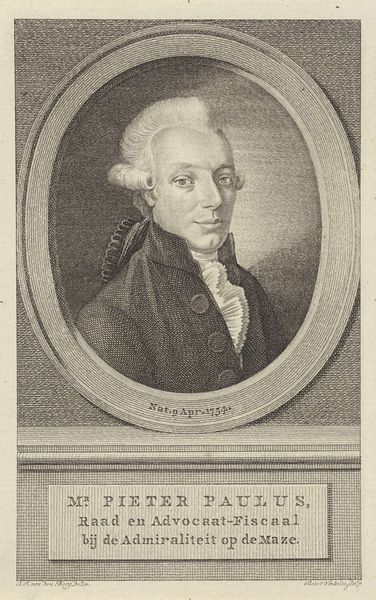
drawing, charcoal
#
portrait
#
drawing
#
neoclacissism
#
charcoal drawing
#
charcoal
#
history-painting
#
academic-art
#
portrait art
Dimensions: height 352 mm, width 249 mm
Copyright: Rijks Museum: Open Domain
This is John Greenwood’s portrait of Willem V, Prince of Orange-Nassau, made as a mezzotint. Looking at this image, it’s clear that Greenwood was interested in more than just capturing Willem’s likeness; he's also showing us a very specific vision of power and authority that reflected the social hierarchies of the Dutch Republic. The sash and star, the elaborate wig – these aren’t just decorative; they're visual cues that signal Willem’s status. This work would have circulated among a specific class of people, reinforcing existing social norms and power structures. The art market and the culture of collecting played a crucial role in shaping how art was produced, consumed, and understood. To truly understand this portrait, we need to delve into archives, explore the history of the House of Orange-Nassau, and understand the role of portraiture in 18th-century Dutch society. Art doesn't exist in a vacuum; it’s always a product of its time, shaped by the social, political, and economic forces at play.
Comments
No comments
Be the first to comment and join the conversation on the ultimate creative platform.
